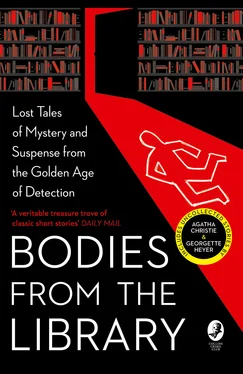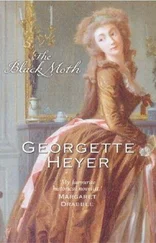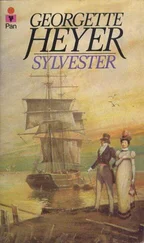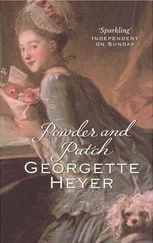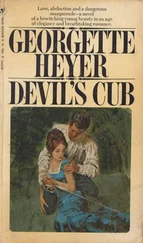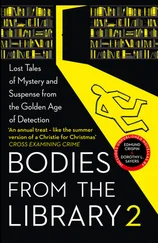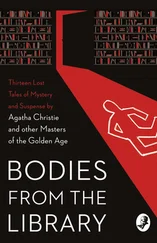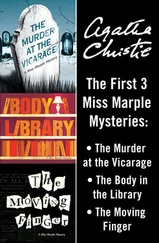He handed the girl the second photograph.
‘Now if the “will” had been in that envelope, the “will” itself would have borne that stamp. But it did not; and that proves that the “will” was not in the envelope when it passed through the post. A clever woman like yourself, Miss Eastcote, will see the point at once.’
‘And what happened after that?’ asked the girl huskily.
‘It’s difficult to tell you,’ Sir Clinton pursued. ‘If it had come before me officially—I’m Chief Constable of the county, you know—I should probably have had to prosecute that unfortunate nurse for attempted fraud; and I’ve not the slightest doubt that we’d have proved the case up to the hilt. It would have meant a year or two in gaol, I expect.
‘I forgot to mention that the nurse was secretly engaged to the doctor all this while. And, by the way, that’s a very pretty ring you’re wearing, Miss Eastcote. That, of course, accounted for the way in which the doctor managed to get her to play her part in the little scheme. I think, if I were you, Miss Eastcote, I’d go back to France as soon as possible and tell Dr Prevost that … well, it hasn’t come off.’
Alfred Walter Stewart, alias J. J. Connington, was born in Glasgow in 1880. A clever child with an enquiring mind, he attended Glasgow High School and graduated in 1902 from Glasgow University with honours in chemistry, mathematics and geology. While Stewart could have pursued almost any of the sciences he decided to focus on chemistry. After completing his doctorate in 1907, he took up an appointment at Belfast University where in 1919, after spells working for the Admiralty and lecturing at the universities of London and Glasgow, he became Professor of Chemistry, occupying this chair until his retirement in 1944. He had been suffering for many years from a debilitating illness, and he died in 1947.
Stewart had begun writing novels in the 1920s, adopting the pseudonym J. J. Connington doubtless to distance what he saw as a hobby from his academic career. His first book, Nordenholt’s Million (1923), dealt with a Wellsian apocalypse, brought about by scientific error and ended—in the Clyde valley—by scientific genius. His second, Almighty Gold (1924), was a more prosaic tale of adventure and crime in the world of high finance. Both books sold well, and were well received critically, but this was the 1920s and what John Dickson Carr would later describe as ‘the lure of detective fiction’ was too great. For his first detective story, Death at Swaythling Court (1926), Stewart wrote an entertaining village mystery in which a blackmailing butterfly collector is poisoned and stabbed. This was quickly followed by The Dangerfield Talisman (1926), an ‘old dark house’ mystery with many characters and almost as many clues.
For Murder in the Maze (1927), Stewart created his first recurring character, Sir Clinton Driffield, an atypically misanthropic policeman who would appear in seventeen novel-length mysteries. Driffield is generally aided, and sometimes hindered, by his Watsonian friend Squire Wendover, a local landowner in the county where Driffield is the chief constable. Driffield is a far more active chief constable than is customary in fiction—or in real life—and, while he can tend to be didactic, he is one of only a handful of detectives in the Golden Age willing to admit, occasionally, that he is unable to explain every aspect of a case. And Driffield can also proceed in unorthodox ways, never more so than in the extraordinary Nemesis at Raynham Parva (1929).
As might be expected from a scientist, Stewart’s mysteries are careful and methodically written and, while some contemporary critics felt the author could sometimes be long-winded, the majority found him adept at constructing ingenious plots, entertaining and imaginative, and above all scrupulous at playing fair with the reader. His novels often feature memorable elements, such as the sinister legend of the Green Devil in Death at Swaythling Court , the hedge maze of Murder in the Maze , the lottery tontine of The Sweepstake Murders (1931) or the ‘fairy houses’ and weaponry museum in Tragedy at Ravensthorpe (1927).
‘Before Insulin’, the only short story to feature Driffield and Wendover, was first published in the London Evening Standard on 1 September 1936 as the final story in Detective Cavalcade , a series of stories selected by Dorothy L. Sayers.
THE INVERNESS CAPE
Leo Bruce
You’d think I was used to violence, wouldn’t you? asked Sergeant Beef, rhetorically , after all the crime and horror I’ve seen. But there was one crime of violence, I remember, which shocked me more than any of your sneaking poisoners could do. It happened some years ago now. One old lady was clubbed to death in full view of her crippled sister. The most brutal case I ever had to tackle.
I knew the old ladies well; nice kind old parties who would do anyone a good turn. They lived together in a big house overlooking their own park. The only thing that anyone could have against them was that they were rich.
Miss Lucia was the older of the two and must have been over seventy. She was active, though: moved like a young woman and loved her garden, which was kept ‘just so’ by two gardeners and a lad. Miss Agatha was a few years younger and no one had ever seen her out of her invalid chair since the bad hunting accident she had as a young girl. She would be wheeled out on to the terrace on fine days and sit there watching her sister in the garden. They were very fond of one another and very happy.
Then their nephew came to live with them, young Richard Luckery, and I didn’t much take to him. It was known that he hadn’t any money of his own and he must have had a lot from the old ladies because he spent like a madman. Motor-cars, racing, racketing about—an extravagant young devil who cared only for himself.
Perhaps what I didn’t like was that he used to dress in the most extraordinary clothes; eccentric, that’s what he looked. And when he started wearing one of those Inverness capes and a deerstalker hat, like Sherlock Holmes, I thought it downright silly.
He had friends to play up to him, though, like anyone else who throws money about. One of these, Cuthbert Mireling, lived right opposite to the old ladies’ home, and another, Gilly Ponstock, had rooms at the local pub where Richard Luckery used to drink, sometimes with one of his aunt’s gardeners, Albert Giggs.
On a Saturday in June, Miss Lucia said at lunch that she was going to spend the afternoon taking cuttings of pinks and pansies in one of the borders. The gardeners would have gone home and she liked having the garden to herself. In fact, she never missed her Saturday afternoon’s gardening.
Agatha asked her nephew to wheel her out on the terrace from which she would be able to watch her sister. This he did, then went up to his own room for a sleep.
At about half-past two, in full blazing sunlight, Miss Agatha was horrified to see a man walk furtively out of the shrubbery with a heavy bar of wood and crash it down on her sister’s head. The first blow may have been enough to kill her, but he struck again and again.
Miss Agatha screamed, but it was some minutes before Katie, the only servant then in the house, came running out and a few minutes more before Richard Luckery appeared. He seemed rather dazed, and said afterwards that he had been asleep.
Miss Agatha then did something which shocked and astounded the servant. She turned to Richard in great horror and shouted, ‘Keep away from me! You killed Lucia!’
Richard protested: he had been upstairs. His aunt was hysterical, he said. He was as shocked as she was. Then he told the servant to telephone for a doctor. The old lady would not be left alone with Richard. It was some time before she became coherent enough to tell the servant exactly what had happened.
Читать дальше
